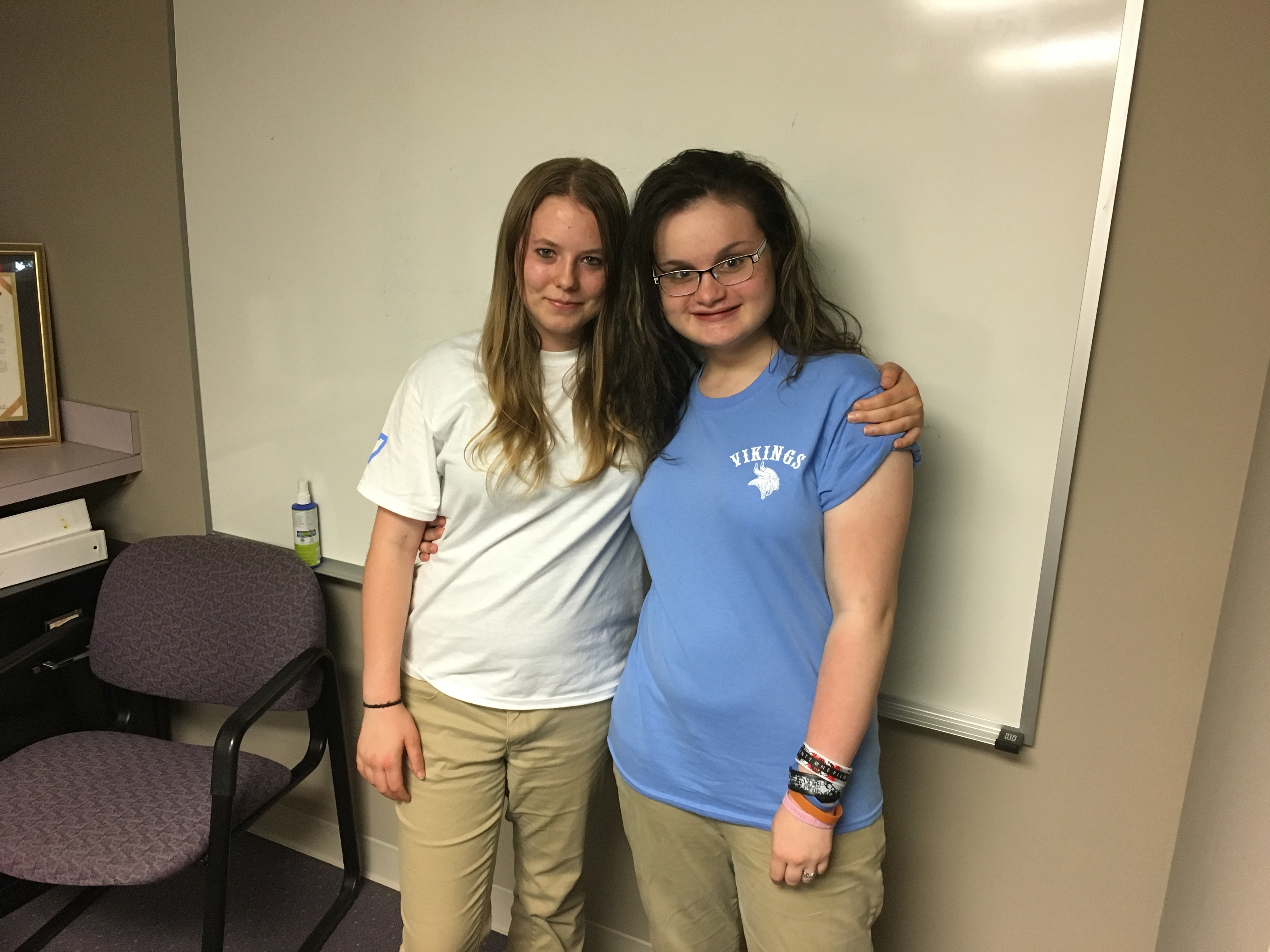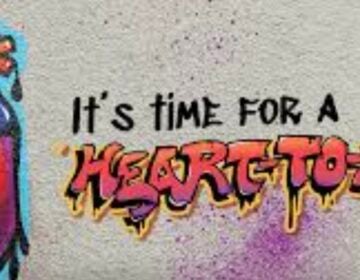Opting for ‘sanctuary model’ of discipline, Bucks school considers kids’ past to help them cope

Katherine (left) and Bonnie attend Valley Day School in Morrisville, Pennsylvania, which adopted the "sanctuary" model for dealing with behavior issues. (Anne Hoffman/NewsWorks).
Tough love used to be a fairly common approach in educating children with behavioral and emotional issues. Often it was more tough than love: Act out, and you will be punished. Behave, and you be rewarded.
The Valley Day School has dramatically altered its approach to discipline, adopting a “sanctuary model.” The new approach takes into account what kids have endured.
Valley Day School sits in a green, suburban neighborhood in Morrisville, Pennsylvania, across the Delaware River from Trenton. The private school is reimbursed by the state for educating students with behavioral disorders.
“When you look at the trauma histories of some of our kids, it’s just really profound,” said Ron Hall, educational director. “We’ve had children here in the last two years that have spent time locked in dog crates. Severe physical abuse.”
And that can compound existing diagnoses such as schizophrenia, ADHD and autism, he said.
When Hall arrived five years ago, the school was calling the police a lot to deal with excessively violent children. Some kids would be sent to “school study hall,” where they were disciplined in a more punitive way. There wasn’t a lot of discussion about what caused the incident, Hall said, so the level of counseling and intervention was minimal.
Kids still go to school study hall, but now, “there’s a significant intervention in looking at what is the history of the child, what has happened, working with a child to understand how that behavior is a violation of the norms of our community,” he said.
The question shifts from “Why did you do that?” to “What happened?”
A tool kit of coping skills
Eleventh-grader Katherine has been here for nine years.
“Well, ever since I was 2 years old, I had a lot of problems, especially behavior problems, so when I was in preschools and stuff, I was really bad,” she said. “I would flip desks, and I would throw chairs at other kids.”
Her school still struggles with fights, but she said things have changed a lot. Before the school launched the sanctuary model, “kids had harder times coping with certain things when they’d get upset, and they didn’t know what to do so they would flip out,” she said.
Now, she said, students have developed more strategies for getting control of their emotions.
“Right now, the sanctuary has kids using their coping skills. And having them get through each period of the day,” she said.
On a recent tour of the school, Katherine greeted a retired teacher who comes back as a substitute.
“Katherine came here when she was very young. I remember Katherine having a lot of explosions and having to leave the room,” said the teacher, Gladys Welber. “She’s grown to be a fine young lady. Very responsible, very creative and very sensitive.”
A little later, Katherine said she was flattered by the that assessment.
“That was pretty awesome,” she said.
Right now, Katherine is excited about two big things: a plan to move down South once she turns 18 and the school’s upcoming talent show.
When it comes time for the talent show, Katherine is going to perform with her friend, 10-grader Bonnie. Before Bonnie came to the school about two years ago, she went to a public school. Her behavior was unpredictable, she said, and the school didn’t know how to handle her needs.
Now, when she feels like things are spinning out of control, she follows a plan.
“It’s basically like five things that you can use to cope. For example, mine has drawing, writing, listening to music, talking to Ms. Stacey and using my mantra which is ‘keep it mellow,'” Bonnie said.
Ongoing work, attention vital
For the sanctuary model to really work, schools and other institutions have to make sure every one on the staff is on the same page, said psychiatrist Steven Berkowitz.
“It’s work. It’s ongoing work,” he said. “It can’t ever end.”
He used a recent example to underscore his point.
At Wordsworth Academy in West Philadelphia, a young boy died after he was restrained by staff. This happened even though the residential treatment center had adopted the sanctuary model.
“And I think, one of the problems with Wordsworth was with turnover. It wasn’t maintained. It wasn’t consistently kept up,” said Berkowitz.
All systems require checks and balances and vigilance to remain true to their core commitments, said Geoffrey Axe, Valley Day School executive director, adding that the school went through a rigorous process to become certified with the sanctuary model.
To work well, sanctuary schools must regularly and willingly maintain training, self-assessment and evaluation by an outside authority, he said.
While Berkowitz and Hall said all schools could benefit from the sanctuary model, Hall cautioned that education — as an institution — is conservative and slow to change.
“Until we schools — not just a specialized school like Valley Day — but all schools, understand the impact of childhood trauma, I think many of the efforts that we’re making are going to be for naught,” Hall said. “We really have to focus on the social emotional development of our kids before we see real serious growth in academic levels.”
Staying in the game
During the tour, visitors observed a boy playing volleyball in the gym become visibly irritated and start walking out of the gym.
He seemed to be upset by the combination of a reporter watching him play and something that happened in the game.
The teacher let him leave, but then Hall noticed a change in his demeanor and told the coach that the student was ready to play after all.
“He’s back, he’s in the game,” said Hall, calling it a small example of giving kids space to use coping skills instead of swooping in with disciplinary action.
WHYY is your source for fact-based, in-depth journalism and information. As a nonprofit organization, we rely on financial support from readers like you. Please give today.




